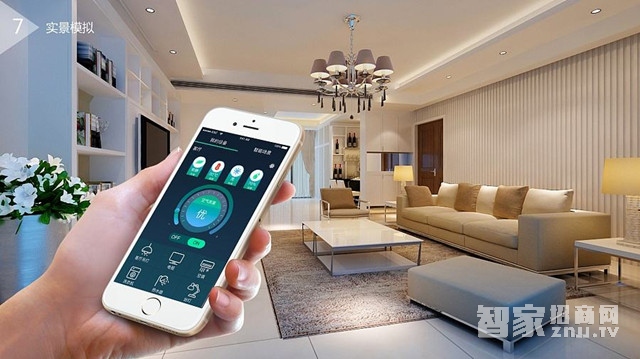The wired smart home is gradually being phased out by the market due to its complicated wiring, high installation costs, and difficulty in promotion. In contrast, wireless smart home systems focus more on simplicity and ease of maintenance. So, what is currently considered the best wireless smart home company in China? Let's take a look at what users have to say.

**User 1:** A few years ago, when people talked about smart homes, they often remembered having to drill into walls for wiring. The mess of cables not only affected aesthetics but also made system upgrades and after-sales service difficult. Fault diagnosis was challenging because the wires were hidden. This led to low customer satisfaction and made it hard for consumers to accept. However, with the rise of the Internet of Things, smart homes are undergoing a second revolution. The level of intelligence has significantly improved, and four major wireless technologies now lead the way in smart home development.
**1. Wi-Fi Technology**
Wi-Fi-based smart home products are the most common today. They offer fast transmission speeds, low cost, and wide adoption. For users, setting up a Wi-Fi-based smart home is convenient, and devices can be easily purchased and connected to the network. However, Wi-Fi has its drawbacks. It suffers from poor security, weak signal stability, and high power consumption, which limits its use in certain applications like smart locks or sensors. Additionally, the maximum number of devices that can be connected to a Wi-Fi network is usually around 16, which is insufficient for larger homes with many smart devices.
**2. Zigbee Technology**
Zigbee is known for its high security, using AES encryption that is 12 times stronger than standard bank card encryption. Its honeycomb networking structure allows each device to communicate with multiple directions, ensuring high network stability. With a theoretical node capacity of 65,300, it can easily cover entire homes or even smart buildings. Zigbee also supports two-way communication, allowing devices to send back status updates, which is crucial for security systems. Plus, its low power design makes it ideal for battery-powered devices, with batteries lasting over 10 years.
**3. Z-Wave Technology**
Z-Wave offers a data transmission rate of 9.6 kbps and an indoor coverage of up to 30 meters. It’s suitable for narrow bandwidth applications and provides decent security and stability. However, it has limitations. The number of nodes is limited (theoretically 256, but realistically around 150), and it uses a tree network structure that can fail if the main branch is disrupted. Also, it lacks encryption, making it vulnerable to attacks. In China, Z-Wave is less common due to its non-civilian frequency band.
**4. Bluetooth Technology**
Bluetooth is familiar to most as a feature on phones. It offers moderate power consumption and cost between Wi-Fi and Zigbee, but its short range and point-to-point communication make it unsuitable for large-scale home networks. It works well for personal devices like headsets or smart scales, but not for comprehensive smart home systems.
At this stage, no single technology is fully mature. Each has its strengths and weaknesses, and the best choice depends on specific needs.

**User 2:** I found some answers one-sided and unclear. I’ve been involved in smart home projects for three years and believe the best isn’t necessarily the most popular. Companies like Lions, Han, and Ziguang have good products, but "best" is subjective.
**User 3:** Smart home is still in its early stages, so there’s no clear leader. Xiaomi may have the most users, but that doesn’t mean it’s the best. Factors like professionalism, innovation, and user satisfaction matter more.
**User 4:** No one can claim the highest market share or quality. The key is a manufacturer’s communication technology, hardware, and cloud system capabilities. Huawei, Oerlikon, and Xiaomi are top contenders, though Huawei doesn’t produce smart home devices themselves.
**User 5:** Smart home hasn’t seen a real breakthrough in 18 years. Most systems are just remote-controlled devices, not truly intelligent. Without a unified standard, real integration remains a challenge.
**User 6:** Smart home setups can be messy, and the concept is still vague. Automation alone isn’t enough—true intelligence requires more than just apps and switches.
**User 7:** There’s no one-size-fits-all solution. Products like AmazingBox stand out for their compatibility with third-party devices and DIY scenario creation, along with features like NAS and dual-band routers.
**User 8:** While opinions vary, I personally prefer AmazingBox for its user experience.
**User 9:** Purple suits villas and commercial spaces, while Haier offers full smart appliance sets, each with its own advantages.
**Related Suggestions:**
- Article: Q&A | Which smart home companies are good? Smart home brand recommendations
- Recommended: Switch sockets, security alarms, smart home monitoring systems
FAKRA Automotive High Frequency Cable Assembly
Fakra Automotive High Frequency Cable Assembly,High Frequency Cable,High Frequency Cable Connectors,Automotive Board Connector
Dongguan Zhuoyuexin Automotive Electronics Co.,Ltd , https://www.zyx-fakra.com